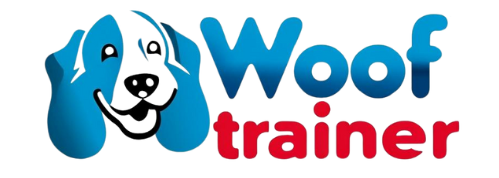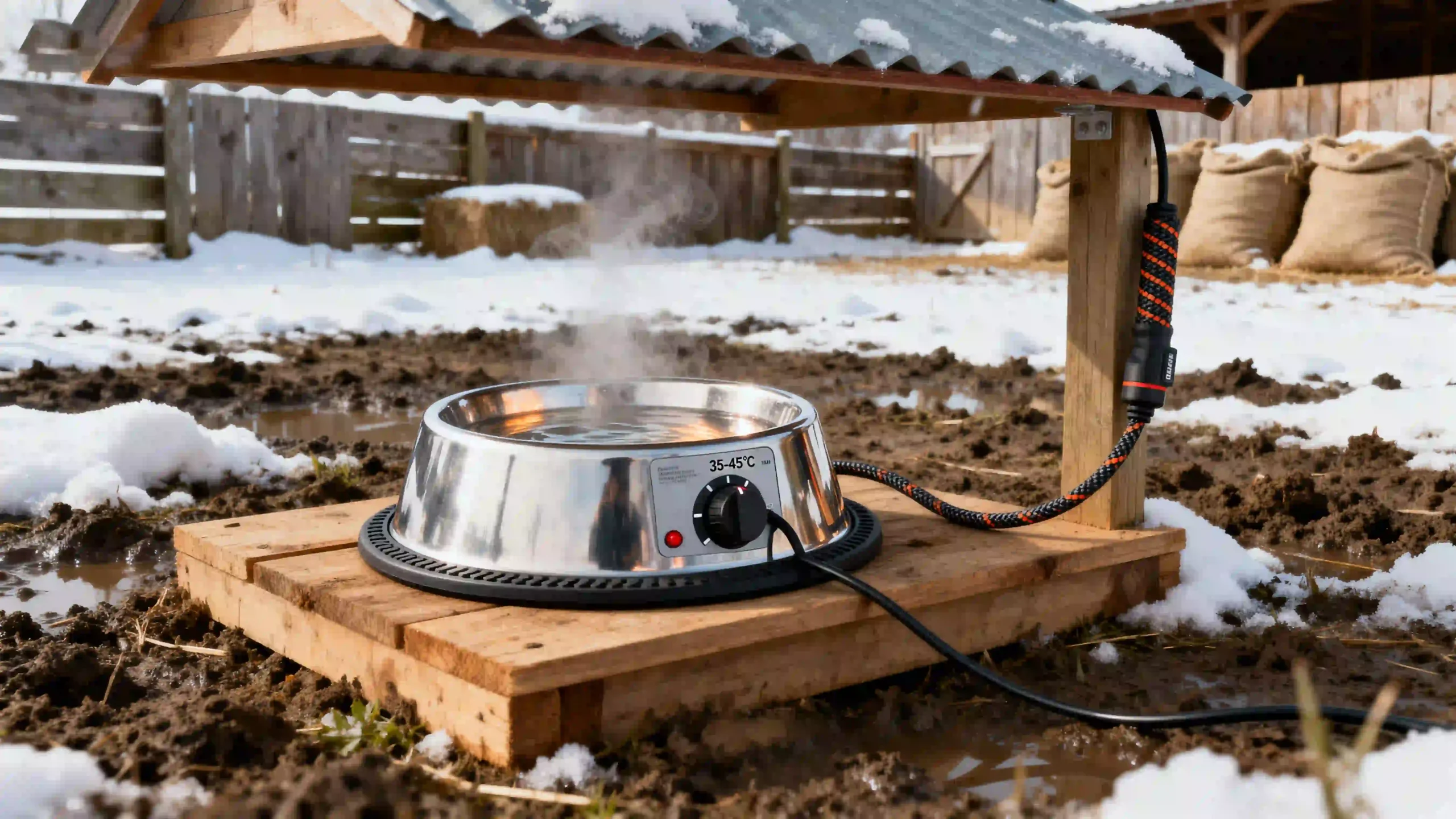If you keep working dogs outdoors—sheepdogs, cattle dogs, guard dogs—you already know winter hydration is more than a convenience; it’s essential. A good heated dog bowl for farms doesn’t just keep water from freezing—it boosts durability, reduces labor, and protects dog health. Here’s what matters when choosing and using heated bowls in farm environments.
What Challenges Working Dogs Face in Winter
On a farm, winter conditions are rough:
- Snow, mud, freezing rain; water sources can be exposed to wind chill.
- Dogs drink frequently—after work, before cold sets in, when panting from exertion.
- Equipment gets knocked, stepped on, chewed.
- Power may be less reliable outdoors; access to wiring or shelters may be limited.
So any heated dog bowl for farms must be built rugged, reliable, and designed to handle real abuse.
Key Features You Should Demand
When you’re shopping, these are the features that matter in practice (not just on paper):
| Feature | Why It’s Important on a Farm |
|---|---|
| Food-grade stainless steel or reinforced cold-rated plastic | Stainless resists rust, dents, snaps; plastic must be thick and formulated not to crack under freezing and thawing. |
| Heavy-duty, chew-proof or wrapped cords | Cords are one of the first failure points—dogs chew, frost cracks insulation, exposed wires fail. |
| Thermostat or ambient-sensor control | The bowl should heat only when needed—wasting less power and reducing wear on components. |
| High water capacity & depth | More water means slower freezing; deeper bowls help avoid top layer freeze that shuts dogs out. |
| Stable & tip-resistant design | Bowls will be kicked, bumped, moved—bases need to stay put, even in mud or on uneven ground. |
| Easy cleaning & solid sealing | Mud, algae, ice buildup are constant; smooth surfaces, removable parts, sealed heating components make maintenance easier. |
Power / Energy & Outdoor Use Considerations
Realities on the farm:
- Some heated dog bowls are rated for extremely low temps. For example, a Premier1 outdoor heated pet bowl claims to keep water thawed in temps down to −20°F while having a built-in thermostat and heavy cord protection.
- Expect higher wattage units for large capacity bowls; large plastic models often run at ~60W with thermostats.
- Wind, snow cover, and exposure will increase heat loss dramatically; you’ll need bowl shelters or windbreaks to help.
- If using solar or battery power, make sure panels/batteries are sized for worst winter conditions, because cold reduces battery capacity and solar gain.
Setup Tips for Farm Environments
Here are practical farm-specific tips to make your heated bowl system last and perform:
- Shelter the bowl
Place under eaves, lean-tos, or small shelters to reduce direct exposure. This helps prevent snow from covering bowl edges or water splashing into circuits. - Elevate off ground
Use raised platforms, blocks, or frames so bowl doesn’t sit in mud, standing water, or ice. Keeps cords protected and bowl cleaner. - Protect wiring
Route cords through conduit or protected tubing; use connectors sealed against moisture; avoid letting cord lie across ice or snow. - Redundancy
Always have spare bowls or spare heating elements. Working dogs can’t do without water—backup equipment saves you from emergencies. - Routine inspection and cleaning
Mud, algae, frozen slush degrade bowl performance and health. Clean frequently; inspect heater, thermostat, and cord daily in freezing weather.
Examples of Rugged Heated Bowls in Real Farm Use
Some products and reports help illustrate what’s out there:
- The Farm Innovators Round Heated Pet Bowl, 1.5 gal is noted for being thermostatically controlled, having heavy anti-chew cord, and durable cold weather plastic. Farmers report it holds up in snow and subzero air temperatures.
- A K&H stainless steel thermal bowl (1.5 gal, 25-watt) has user reports of good performance outdoors, keeping working dogs hydrated in freezing conditions.
- Feedback from farm-supply stores indicates that plastic bowls crack if dropped or exposed to UV and ice repeatedly; steel versions survive better.
- The WoofTrainer Heated Dog Bowl is a heavy-duty, commercial-grade hydration solution noted for its superior safety and hygiene. Crafted from food-grade 18/8 stainless steel ( diameter) and operating on a safe low-voltage supply, it completely eliminates the risk of electrical shock to pets and handlers. Its powerful element maintains water within an optimal to range, ensuring reliable performance even when temperatures drop to . Professionals value its durable stainless steel wrap protecting the power cord, making the WoofTrainer an ideal, long-lasting investment for kennels and livestock facilities.
Behavior & Health Considerations
Keeping water available isn’t enough; consider how dogs behave and stay healthy:
- Dogs may refuse bowls that are too cold or have ice crusts—even small ice rings discourage drinking. That can lead to dehydration. Reading on Protecting Farm Dogs from Dehydration in Freezing Temps suggests keeping water just above freezing and preventing surface freeze.
- Mud, contaminants, or dirty water leads to bacterial growth. Clean bowls prevent illness.
- Cold water slows drinking; mild warmth (via heated bowl) helps encourage hydration—important for dogs working outdoors all day.
- Teeth & mouth health: drinking icy water can stress teeth; heated bowls avoid icy shards.
Durability & Longevity: What Stands the Test
What makes a heated dog bowl survive farm life:
- Stainless steel bowls with strong welds or solid forming resist denting and abrasion.
- Heating elements must be sealed; plastic bodies must be cold-rated. As seen in Durability Test: Heated Dog Bowls That Survive Farm Life, bowls with exposed heating plates or cheap plastic fail faster.
- Cord & plug assemblies need extra protection—mud, ice expansion, chewing all take toll.
- Warranty and parts availability matter: farms often need spare parts like cords, thermostat modules because having a bowl go dead mid-winter is a problem.
How to Choose: Checklist for Your Farm’s Needs
Here’s a decision checklist to guide purchase:
- Estimate how many working dogs will drink per bowl (capacity needed).
- Assess your coldest winter temperatures and exposure (wind, shade, snow).
- Check your power setup: reliable outlets, backup power; or solar options.
- Look for models with features: heavy casing, anti-chew cords, sealed wiring, thermostat.
- Consider weight & handling: steel bowls are heavier; plastic lighter but less durable.
- Plan for replacement parts & ability to clean frequently.
Relating It to Broader Resources
If you want more in-depth lab/field data, see Heated Dog Bowls: The Complete Guide to Keeping Pets Hydrated in Winter. That covers components, heater ratings, insulation, etc.
Summary
A well-chosen, rugged heated dog bowl for farms can make a big difference:
- Keeps water usable in conditions many bowls would freeze.
- Saves you time & labor hauling water or chipping ice.
- Protects dog health: hydration, teeth, resistance to illness.
- Lasts longer, replacements less frequent when built tough.
Getting one that meets real farm needs—not just “good enough for indoors”—makes winter dog care more manageable and less stressful for you.
FAQ
-
What minimum wattage should a heated dog bowl have for outdoor farm use?
For large working dogs in freezing farm conditions, aim for at least ~50-60 W for bowls with good insulation and sufficient volume. Lower wattage can work if sheltered and for fewer dogs. -
Can I run heated dog bowls off solar power on remote parts of the farm?
Yes—if you have a solar panel + battery system sized for worst-case winter days. But heating demands are higher in cold; expect reduced performance if cloudy or battery weak. -
How often should I clean and inspect farm-grade heated bowls?
Daily rinse and debris removal; at least weekly deep clean and inspection of heating element, cords, thermostat; after extreme weather or storms for damage. -
Are steel bowls always better than plastic in farm settings?
Steel offers greater durability, resists denting, cracking, and holds up under rough conditions. But steel is heavier and may cost more. High-quality plastic can work but must be designed for cold and reinforced. -
What backup plan should I set up for when electric bowls fail?
Keep spare bowls and spare cords/elements; have unheated but insulated water sources as fallback; consider generator or battery backup; schedule checks so failures are caught early.


